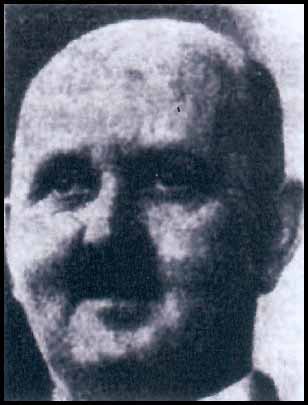- Australia 1901-1988
- New South Wales
- Overview of NSW
- Telegraph lines
- Telegraph Offices
- Date stamps
- Forms
- Envelopes
- Instructional annotation
- Collect
- Delayed
- Free
- Immediate Urgent
- Reply paid
- Rates
- Stamps
- 1871 Telegraph stamps
- 1885 proposal
- 1893 proposal
- Queensland
- South Australia
- Tasmania
- Victoria
- Western Australia
- International
- Special aspects
| Sir Harry Percy Brown was perhaps the most influential person during the Australian era of communication by telegrams.
He was born in County Durham in England and his father had previously been the Superintendent of the London Telegraph Office. After being educated as an engineer at Durham College in Newcastle upon Tyne, he was employed at the Post Office. He rapidly rose to important positions including advising the Indian Government on the use of the telephone to manage rail traffic and also was responsible for the planning and management of all telephone and telegraph plant in Great Britain. |
 One of the few images of Harry Percy Brown. Published in the Argus on 9 June 1938. |
Brown's first task was to strengthen the procedures and operation of the central administration. The first section on which he focussed (in 1923) was "Telegraphs and Wireless".
As part of his changes, Brown changed promotion procedures and gave more weight to technical expertise than to seniority. He also introduced new equipment to increase productivity - for example:
- multiple channels to facilitate inter-office communications between interstate offices;
- the world's most extensive mechanised mail-handling system.
Public relations were also an important priority area for Harry Brown. He introduced strategies to solicit opinions of the public on all aspects of the postal service - including communication by telegraph - and he initiated publicity of the Department's services through advertisements. Evidence of this promotional strategy first appeared on telegrams in 1929.
Wireless broadcasting was another area which received considerable attention from Brown. He was, for example, credited with the wireless telegraphy regulations and with the formulation of "A" and "B" class stations both of which were legislated in the Wireless Agreement Act of 1924. Later, he ensured that his department was responsible for technical aspects to support the national service of the Australian Broadcasting Commission after it was formed in July 1932. Being dismayed by the growth of newspaper-controlled radio stations, Brown was influential in drafting the legislation limiting the number of stations owned by one licensee.
In October 1939, Brown suddenly resigned probably precipitated by the proposals to transfer some of the Department's technical services in broadcasting to the ABC and to devolve some of the responsibilities of the Director-General. Within two months, he accepted the appointment as Chairman and joint Managing-Director of the British General Electric Co. Pty. Ltd. In 1940, however, he was released from this position "as a wartime gesture" to become a Government Co-ordinator-General of Works in which he had to advise the Australian Loan Council on the degree of civil and military urgency of the major capital works planned by the State governments. He also became involved in a number of other war-time initiatives. At the end of the war in 1944-45, he wrote a report which provided the framework for the post-war Snowy Mountains hydro-electric scheme.
Further details can be found at: